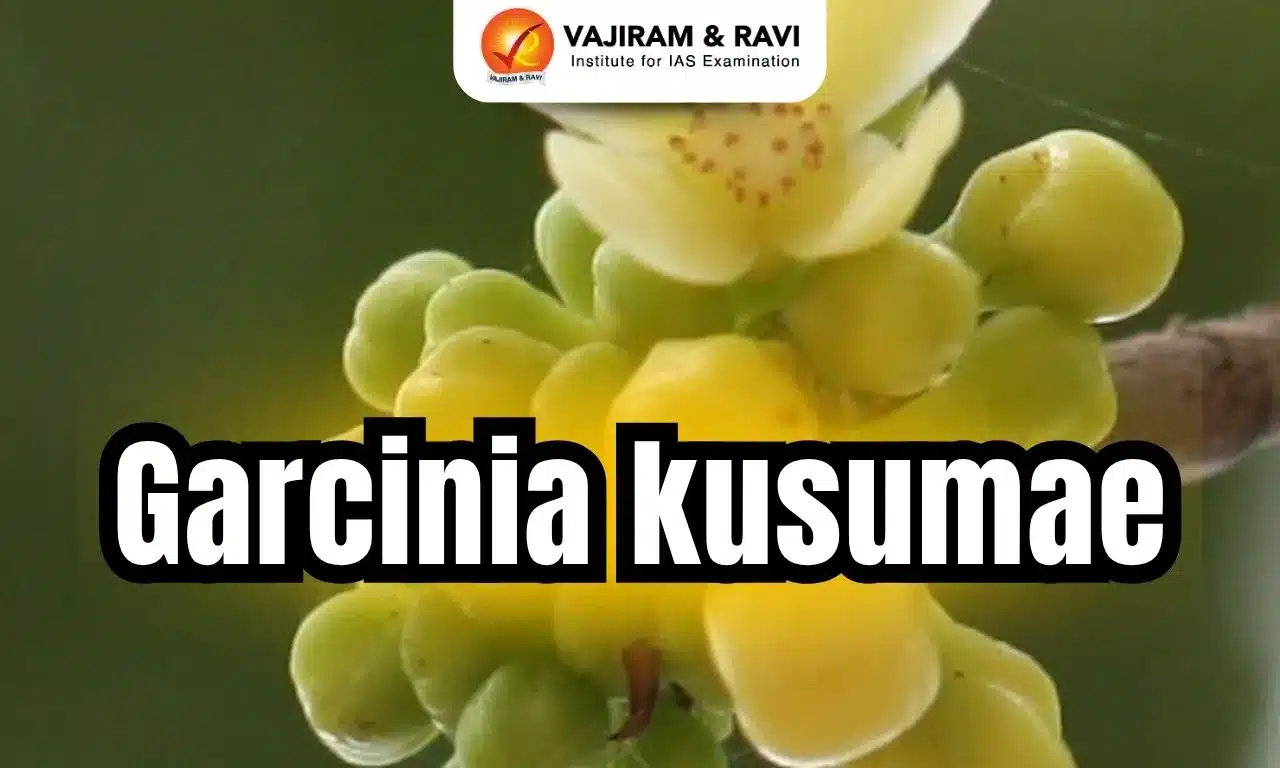Garciniakusumae Latest News
Recently, botanists discovered a new garcinia species in Assam and named it as Garciniakusumae.
About Garciniakusumae
- It is a new tree species belonging to the genus Garcinia, commonly referred to as thoikora in Assamese.
Features of Garciniakusumae
- It is a dioecious evergreen tree that can grow up to 18 metres tall, Garcinia kusumae was observed to flower from February to April, with fruit maturing between May and June.
- Morphological analysis revealed distinguishing characteristics, including up to 15 staminate flowers per fascicle, fewer stamens per flower (except in Garcinia assamica), and berries with blackish resinous exudations.
- The fruit holds local cultural and medicinal value.
- According to the study, the sun-dried pulp is used to prepare a sherbet (soft drink) with salt and sugar, consumed during hot days to prevent heat stroke and alleviate thirst.
- It is also used in curries with fish and employed as a traditional remedy for diabetes and dysentery.
- The seed aril, slightly sour and sweet, is eaten raw, often with salt, chillies, and a dash of mustard oil.
Key Facts about Garcinia
- Garcinia, the largest genus in the family Clusiaceae, comprises 414 species of shrubs and trees.
- It is Pan-tropically distributed, its centres of diversity are found in Africa, Australasia, and Southeast Asia.
- The genus is known for its floral diversity, frequent presence in lowland tropical rainforests, and considerable pharmacological potential.
- In India, 33 species and seven varieties of Garcinia have been documented, with Assam accounting for 12 species and three varieties.
Source: TH
Garciniakusumae FAQs
Q1: Is garcinia fruit edible?
Ans: The tree grows in various parts of Asia, and its fruit is very popular as a food, spice, and medicine in India and Malaysia.
Q2: What is the local name of garcinia?
Ans: In the Malabar Coast, it is known as kudam puli and in Tamil speaking areas of Sri Lanka and India, it is called goraka.











